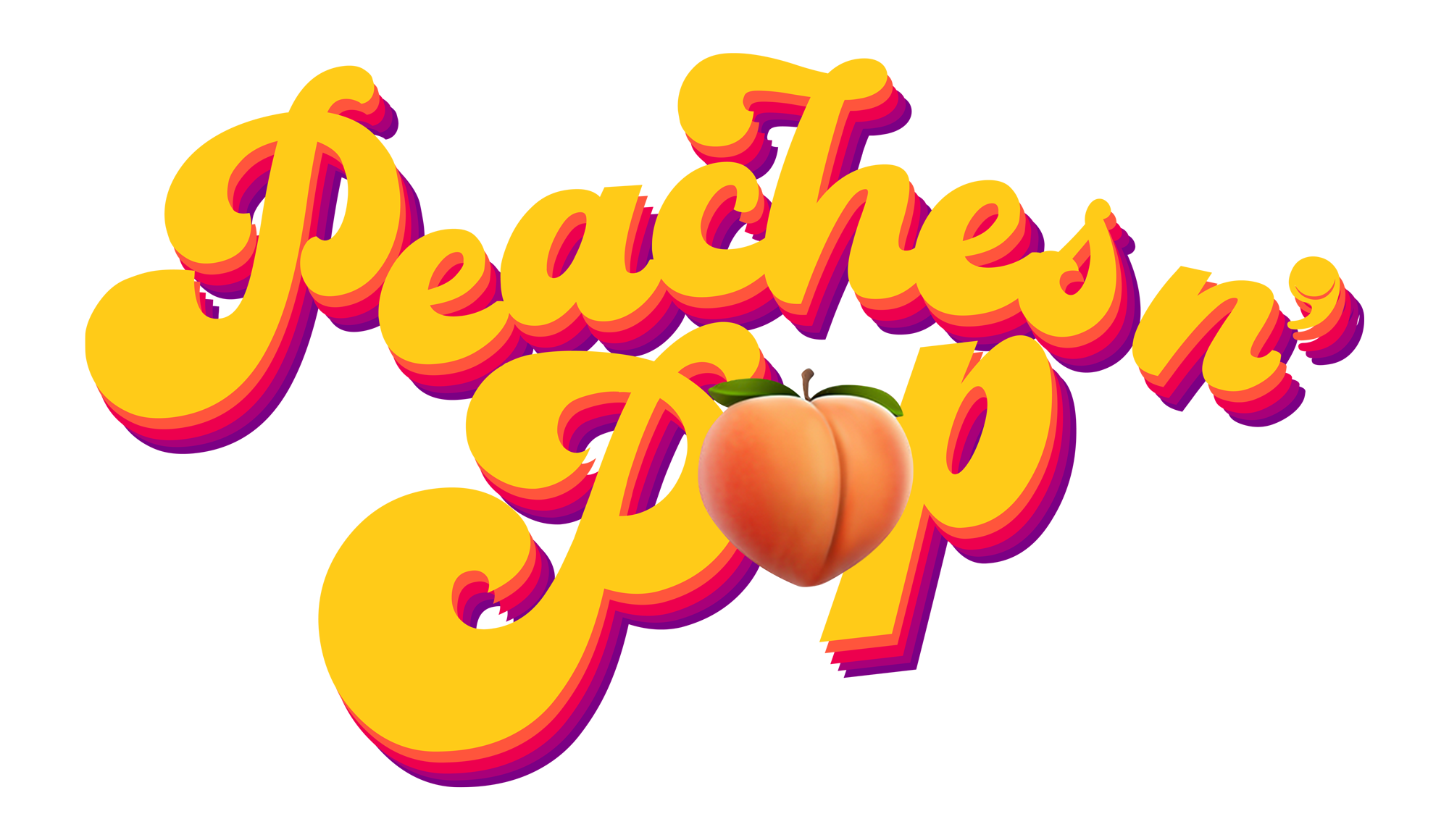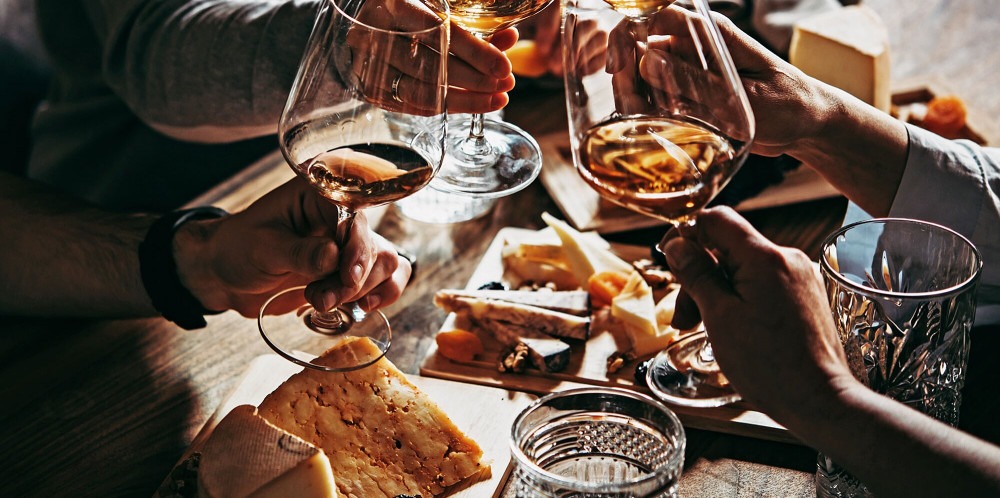Here's a fun question to amuse your wine-geek friends with: What style of wine is gaining in popularity all over the U.S., but can never be sold with its name written on the label?
The answer is orange wine, an unofficial but now globally popular shorthand that refers to "wine made from white grapes that were fermented with their skins." The challenge is that the Alcohol and Tobacco Tax & Trade Bureau (TTB), which oversees U.S. wine labeling, has pronounced that the term "orange wine" might confuse people and make them believe the wine is actually made from oranges.
READ MORE: Big Wine Is Over. Here's What's Next
Therefore, if you enjoy these wines, you have to hunt them down via various codewords: skin contact, amber wine, and skin-fermented white wine, or foreign language terms such as curtimenta (Portuguese) or vino bianco macerato (Italian).
The term orange wine has gained in popularity because it's a simple way to refer to the darker amber or orange hue of the wines. Color in orange wines comes from prolonged contact with the grape skins during fermentation, the same way red wines are produced from red grapes. It's the opposite of mainstream white wine production, where the grape skins are removed from the juice after just a few hours.
Orange wine has come in for its fair share of criticism, mostly because it's seen as a poster-child for the natural wine movement. Natural wines, made with minimal intervention in both the vineyard and the cellar, often have startlingly different aromas and flavors that seem to worry wine traditionalists. But since orange wines often have a substantial textural component—tannins, as in a red wine, or a fuller body—they present a greater point of difference than their minimal intervention white, rosé, or red cousins.
There's no need to get caught up in the debate, but just remember this: Orange wine (or skin-fermented white wine if you tend toward the verbose) refers to a winemaking technique, not to a philosophy. That's where it differs dramatically from natural wine. And, bearing that in mind, orange wines are as broad and diverse as whites, reds, or rosés are.
READ MORE: The 2021 Wine Lover's Guide
While the roots of this winemaking style are ancient—it's the ultimate zero-technology winemaking method—its modern-day renaissance only started to gather speed in the last two decades, thanks to pioneering producers in northeast Italy (Friuli), western Slovenia (Brda), and notably the country of Georgia (essentially its birthplace; skin-contact whites have been made in Georgia for thousands of years).
Now, winemakers in every wine-producing corner of the globe have enthusiastically turned their hands to the style, meaning that the sheer number and variety of wines, flavors, textures, and styles is mind-boggling. Here are a dozen delicious orange wines from nine different countries, giving a glimpse of what's on offer for anyone with an adventurous palate.
2017 Heinrich Graue Freyheit ($51)
If you thought descriptors like "elegant" and "fruit-focused" didn't apply to orange wines, think again. This Austrian bottling is zero-zero winemaking (no additives, not even a pinch of sulphur dioxide) done with exceptional skill, with the end result showing fruit purity and a juicy, tangy palate that just fizzes with energy.
The blend of biodynamically grown burgundy varieties (Grauer Burgunder, Weissburgunder and Chardonnay) from Heinrich's Burgenland vineyards was wild-fermented with two weeks of skin contact, then aged 17 months in large-format used oak barrels. From the 2018 vintage on, Heinrich is swiftly replacing the barrels with amphorae, achieving yet more finesse and purity.
2018 Manon High Paradise ($40)
Tim Webber & Monique Millton farm their vines biodynamically 2,000' up in Australia's Adelaide hills, on land which they acknowledge as spiritually belonging to the Peramangk Aboriginal tribe. High Paradise is a fascinating blend of Chardonnay, Savagnin and Gargenega (the key grape of Soave), with some components skin fermented and others direct-pressed (fermented without their skins).
The end result has a silken, refined texture with the zestiness of Garganega and a wisp of floral aromatics. Note that the 2017 also drinks beautifully right now, suggesting this is a wine that benefits from a few years of bottle age.
2018 Pepe Mendoza Casa Agricola Pureza Muscat ($30)
This exciting wine from Alicante, in the far south of Spain, wows with its freshness and finesse. Pepe Mendoza dry-farms his vines, and has altitude on his side to help maintain all important acidity in the grapes.
Fermented in tinajas (small Spanish amphorae), the skin contact here gives incredible concentration to the perfumed peachy fruit, adding tantalizing scents of rosemary and mint. There's nothing spiky about the texture, but it's a structured and substantial wine, built to last.
And don't fear the Muscat—if you're not a fan of the variety's typically in-your-face lychee or rose petal aromas, this wine has you covered. Those notes are nicely reigned in and don't dominate the experience of drinking it.
2019 Domaine des Mathouans Mine de Rien ($27)
Some wines just have that intangible drinkability factor. And this one from France's Roussillon region qualifies. For it, Muscat a Petit Grains gets the whole-bunch treatment, with a semi-carbonic maceration lasting about 20 days.
The result is an utterly joyful expression of grapiness and all things aromatic, with the merest hint of barnyard rusticity that says "don't take me seriously—just drink and be happy." It's a total smoothie when it comes to texture, but in terms of body and depth is a different beast to a standard non-skin fermented Muscat.
And as for the name—mine de rien—it means "no BS." Indeed.
2019 Baia’s Wine Tsitska-Tsolikouri-Krakhuna ($28)
While qvevri-fermented wines from eastern Georgia (Kakheti) are sometimes brutally tannic and dried out, the traditional style in the west (Imereti) has always been softer, with less skin contact.
The qvevri (a Georgian-specific type of large, buried amphora with a distinctive point at the bottom) has been at the core of winemaking here for well over 5,000 years. Baia and her sister Gvantsa Abduladze make low-intervention, traditional-style wines at their family estate in Imereti—essentially just grapes plus long fermentation and ageing in the clay qvevri. Baia's wines have a delicate touch, and none more so than this blend of the region's three most common indigenous varieties.
You'll taste tangy citrus, umeboshi plum and a bit of kiwi. It's really zippy and leesy with a lovely tannic prickle on the finish. This basically has it all: fruit expression, structure and freshness. And it's a super-accessible introduction to western Georgia's qvevri tradition.
NV Croci Campedello Bianco Frizzante ($24)
Emilia-Romagna's Massimiliano Croci is one of the more shy and retiring young winemakers I know, but his wines are outspoken and characterful. This lightly sparkling frizzante style is typical of the region (it's not too far away from Lambrusco country).
He partly ferments it in tanks, and then bottles it to develop the all-important bubbles. Croci is situated in the Colli Piacentini sub-region, home to the very particular Malvasia di Candia Aromatica variety. As you might expect from its name, this is a very aromatic grape, with a distinctive candied-fruit and dried-flower perfume.
Campedello always has a few weeks of skin contact, and there are tannins as well as bubbles, a combination that I love—especially in tandem with some of the pork-heavy cuisine that's popular in the region.
2015 Paraschos Amphoreus Ribolla Gialla ($56)
The Paraschos family have Greek roots, but settled in an idyllic part of Italy's Collio, right on the border with Slovenia. Inspired by their renowned neighbors Gravner and Radikon, their white wines are made with long skin contact and sometimes, as here, are fermented in amphora.
The Paraschos' amphoras of choice are small Cretan vessels. Evangelos and his sons Alexis and Jannis always achieve amazing tension in their wines, and this is no exception. Ribolla Gialla isn't a variety with a particularly strong fruit character, although here there are ripe yellow plums on the palate. But what it excels at (when skin-fermented) is a slightly honeyed, herby complexity and very serious structure. All of this makes for a wine that you can happily drink now (at almost six years old), but also cellar for years longer.
2019 Herdade do Rocim Amphora Branco ($19)
It's extraordinary to think that in Portugal, southerly Alentejo's clay-pot winemaking tradition remained almost invisible—hiding in plain sight—for much of the last half-century. The simple technique of fermenting grapes with skins and stems in large clay pots (500–1,000 liters is typical) has a history going back at least two millenia.
Herdade do Rocim is one of a handful of producers who've been inspired to take this ancient method and revitalize it with one key difference: they actually bottle the wine, so you get to taste it!
This amphora branco has remarkable fruit purity and a ripe pear character; nothing rustic or clumsy about it. Even though it stays on the skins for many months, the extraction is so gentle that the finished wine has the merest tannic prickle. Earthy, herbal and slightly smoky notes add to the finish.
2016 Quinta da Costa do Pinhão Branco ($43)
The story of this Douro estate is typical: Until it was inherited by Miguel Morais from his grandfather, everything it produced was sold to major port wine houses, vanishing into their blends. But Morais felt the vineyards had more to offer for the production of still wines.
Since the winery was built for making port, it never had a press. So when Miguel came to make his first white wine (together with consultant winemaker Luis Seabra), the obvious solution was to use the skins. There's a nod to tradition here, too, as white ports are also typically made with long skin contact.
The Branco 2016 tingles with chamomile and gunflint notes, pin-sharp orchard fruits and butterscotch. Texturally, it's elegant and rich, with a long, smooth finish. It shows wonderful evolution and is firing on all cylinders right now.
2016 Ferdinand Brutus Rebula ($35)
Slovenia's Rebula variety (a.k.a. Ribolla Gialla in Italy) is perfectly suited to long skin fermentation: It's only with the skins that its true character, complexity and structure can speak. And Matjaz Četrtič is an assured winemaker who really makes this style sing. Here, the Rebula has a whole year to commune with its skins and develop depth and gravitas.
The nose teases you with aromas of autumnal, stewed fruits and a hint of fresh sage, then the palate thrills with its tartness, plus assertive but fine tannins. It's laser-sharp but somehow not in any way austere.
This style of structured orange wine deserves to be taken seriously—conceptually, think of it as red wine rather than white. Don't serve it too cold, and it will go beautifully with a juicy pork cutlet or some steak tagliata.
2019 Deovlet Wines Pinot Grigio Ramato “This Time Tomorrow” ($35)
Edna Valley, where Ryan Deovlet sources the grapes for this wine, is a very warm part of southern California. Yet he found a few tricks up his sleeve to ensure that this first vintage of his ramato remains lively. And with winemaking experience culled from time spent in Australia, New Zealand and Argentina, Deovlet is no stranger to challenging climates.
Part whole-cluster fermented and part fermented in sandstone amphoras, with a whopping eight months of skin contact, this wine gets its charming hue from Pinot Grigio's innately pink skins, along with aromas of rhubarb and redcurrant. And the texture is silky smooth and elegant.
Ramato refers originally to an old Venetian wine style, where Pinot Grigio was lightly skin fermented for 24-48 hours (the word translates as "copper"). Deovlet was partially inspired to make this wine after reading a book about orange wine entitled Amber Revolution, written by some fellow by the name of Simon J. Woolf (and yes, you can buy it here).
2018 Donkey and Goat Winery Stone Crusher Roussanne ($40)
When Jared and Tracey Brandt started playing around with skin fermentation for their Roussanne back in 2009, they weren't even aware that "orange wine" existed as a thing or a category.
Now the world has caught up. Their chunky, expressive Roussanne is a highlight for me every year. Macerated for about two weeks on the skins, it shows vibrant apricot fruit with a fine salty seam and racy acidity on the finish. Interestingly, it feels far tauter and more lively than many varietal Rousannes from the grape's home in the Rhône valley, where it can sometimes feel a bit flabby.
Stone Crusher is aptly named—it's substantial, and could almost be a meal in itself. But packed with ripe fruit and mineral tension as it is, the balance is perfect. Best way to get it? Contact the winery directly—and then explore the rest of their fascinating portfolio.





